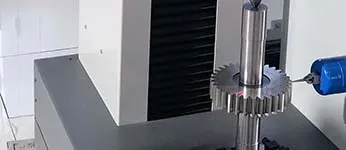synchronous drive
Understanding Synchronous Drive Systems
In modern mechanical engineering and robotics, synchronous drive systems play a pivotal role in precision control and efficiency. Unlike their asynchronous counterparts, synchronous drives utilize a system where the angular position of the drive phase is synchronized with the control signals. This synchronization enables these systems to achieve accurate and reliable operation across various applications, making them indispensable in numerous industries.
The Mechanics Behind Synchronous Drives
Synchronous drives typically incorporate permanent magnet motors or stepper motors. These motors operate on the principle of magnetic fields produced by magnets arranged strategically within their structure. The controller sends out pulses that dictate the motor’s movement precisely. Because these motors rotate in synchrony with the frequency of the supplied electrical signal, they can maintain a constant speed and position—hence the term synchronous.
One significant advantage of synchronous drives is their ability to deliver high torque at low speeds. This feature is particularly beneficial in applications like robotics, CNC machines, and conveyor systems, where precision and control are paramount. With their torque being independent of speed, these systems can operate efficiently, ensuring that the performance remains consistent, even under varying load conditions.
Applications of Synchronous Drives
Synchronous drives find widespread application across various sectors. In the manufacturing industry, they are used in conveyor belts for material handling. Here, the ability to control speed and position accurately ensures that materials are transported efficiently and safely. Furthermore, synchronous drives are critical in robotics, where they contribute to the movement and manipulation of robotic arms, allowing for intricate tasks that require high precision.
In the automotive sector, synchronous drives are often found in electric vehicles (EVs), where they contribute to efficient power transmission from the motor to the wheels
. Their capability to provide high efficiency and performance makes them ideal for this application, promoting energy conservation and reducing operational costs.In terms of home appliances, synchronous motors are prevalent in devices such as washing machines and food processors. Their ability to maintain consistent speed and torque ensures that these appliances operate smoothly and effectively, enhancing the user experience.
synchronous drive

Benefits of Synchronous Drive Systems
The benefits of synchronous drive systems are extensive. One of the most notable advantages is their efficiency. By operating with a fixed speed dictated by the electrical supply frequency, synchronous drives minimize energy losses associated with heat and friction, making them more efficient compared to other drive types.
Moreover, their precision is unmatched. Synchronous drives can make quick adjustments in response to control signals, which is crucial in applications that require synchronization with other systems. This precision is also essential in processes that require high levels of accuracy, such as engraving and milling operations in manufacturing.
Another benefit is their reduced maintenance needs. Because synchronous motors operate at higher efficiency levels and generate less heat, they generally have a longer lifespan and require less frequent maintenance. This reliability contributes to lower operational costs and less downtime for businesses.
Challenges and Considerations
Despite their many advantages, synchronous drive systems are not without challenges. One of the primary concerns is their dependency on electronic controllers. A malfunction in these systems can lead to performance issues, necessitating the need for robust and reliable control systems.
Additionally, the initial cost of synchronous drive systems can be higher than that of other types of drives, which might deter smaller operations from adopting the technology. However, the long-term savings and efficiency gains often outweigh the initial investment.
Conclusion
In conclusion, synchronous drive systems represent a significant advancement in the realm of mechanical drives. Their ability to provide high efficiency, precision, and reliability makes them indispensable in various industries, from manufacturing to automotive. As technology evolves, it is likely that synchronous drives will continue to become more sophisticated, further enhancing their role in modern engineering solutions. By understanding their mechanics, applications, and benefits, businesses can make informed decisions about integrating these systems into their operations, ultimately leading to improved efficiency and productivity.








